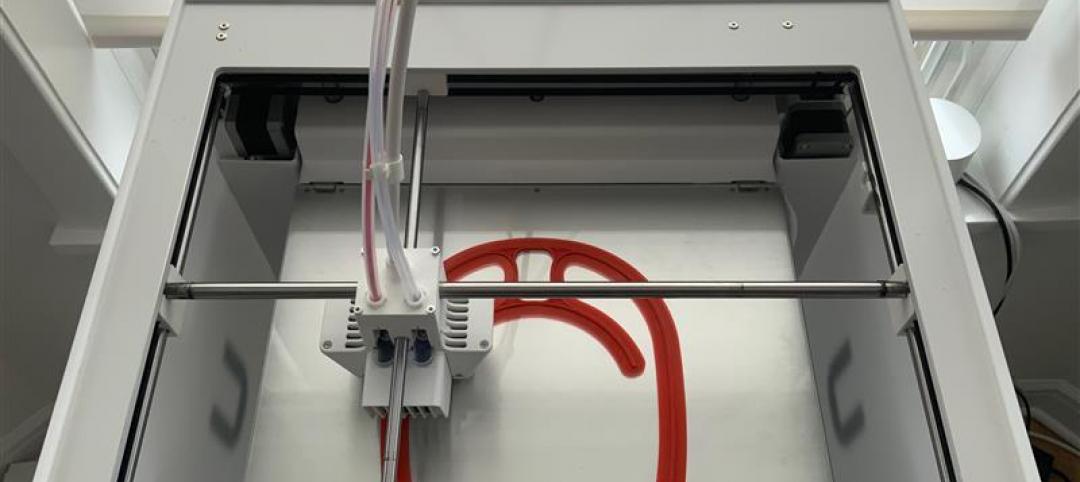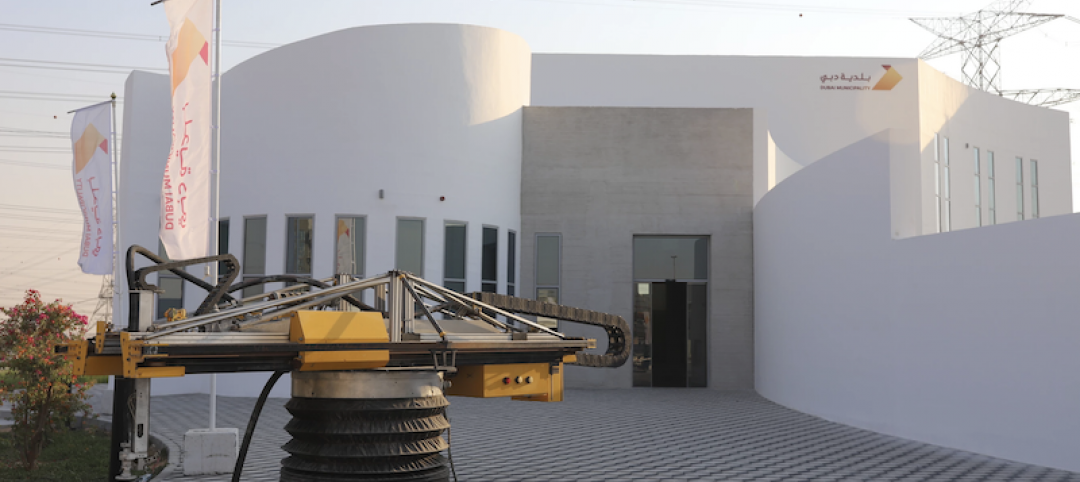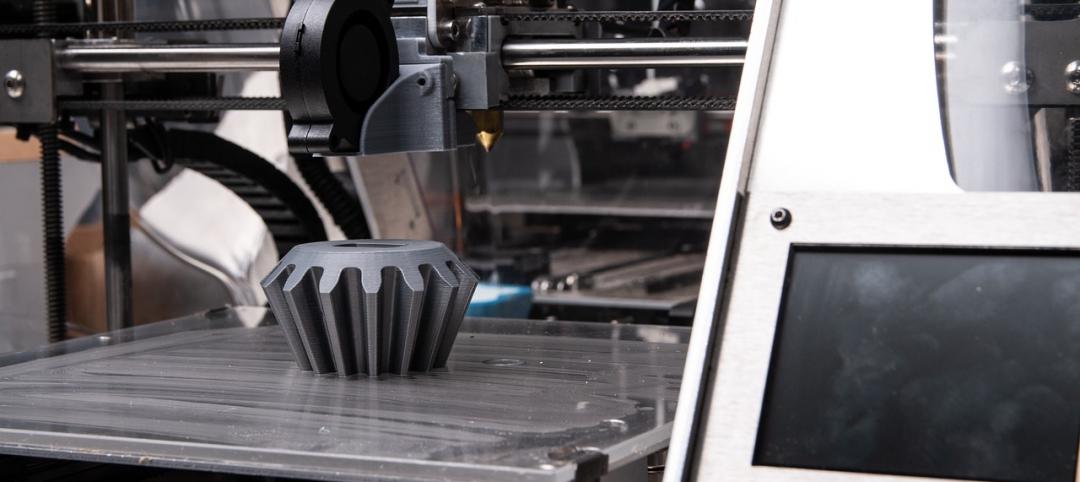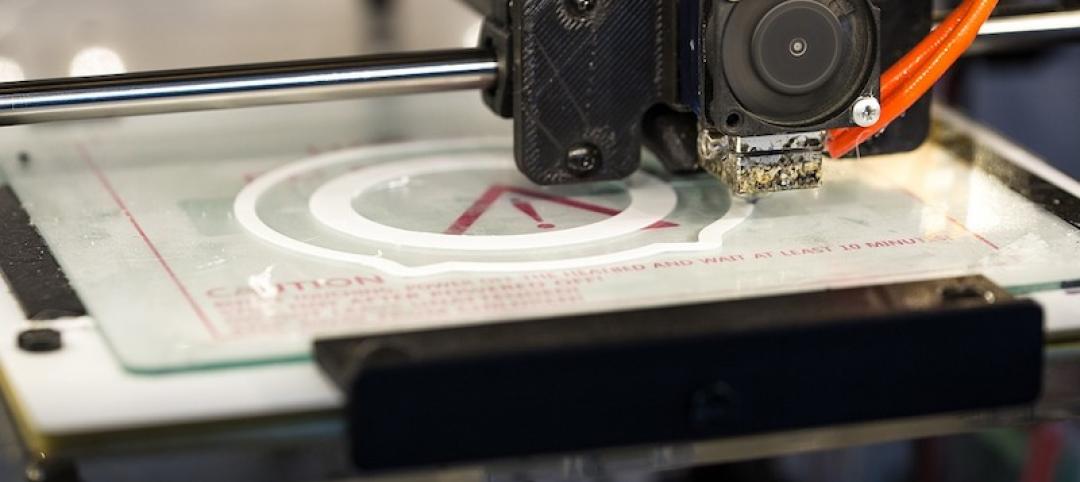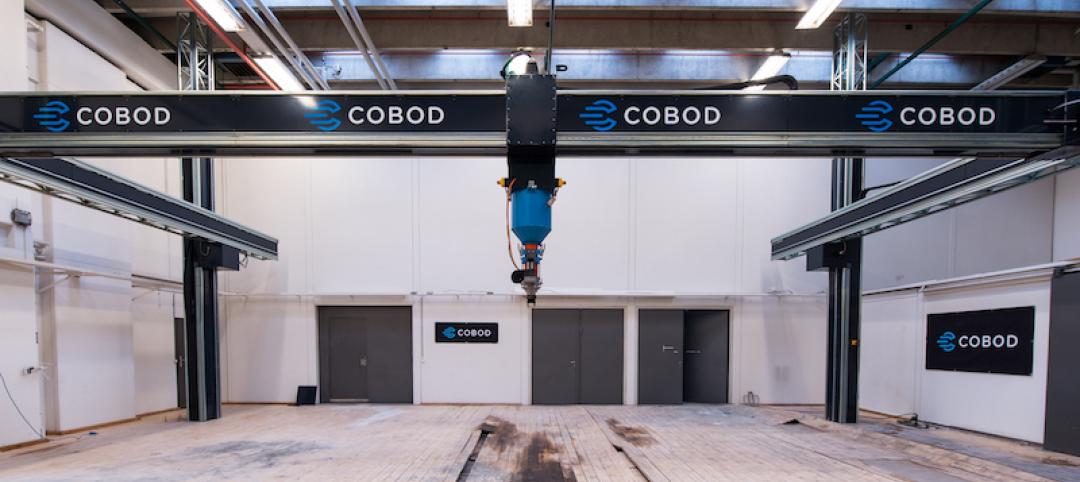The University of Michigan’s DART Laboratory has unveiled a new product called Shell Wall—which the organization describes as the first lightweight, freeform 3D printed and structurally reinforced concrete wall. The innovative product leverages DART Laboratory’s research and development on the use of 3D-printing technology to build structures that require less concrete.
Ultra-lightweight, 3D printed concrete walls can facilitate the implementation of 3D concrete printing with thermal insulation while requiring less concrete and rebar. Compared to a conventional, solid concrete wall of equivalent size, Shell Wall delivers a 72% reduction in weight while offering the same structural strength. DART Laboratory’s technique allows for waste-free concrete construction and efficient use of material by placing it exactly where it’s needed for structural purposes.
Shell Wall’s 3D concrete printing method uses a computational model to optimize layout throughout robotic construction, reducing the use of concrete and creating greater design flexibility. Shell Wall supports its load case with material distributed in a grid of curved ribs. The concrete between the ribs is domed to increase stability and minimize the amount of material.

Shell Wall also can regenerate forms that closely match the initial optimization while accounting for fabrication and material constraints. For instance, during the design stage, it can automatically suggest alternative geometric features in areas where the deposited material might collapse due to a sharp angle or where the robot might collide with itself.
By using commonly available concrete instead of highly specialized mixes, Shell Wall can mitigate challenges faced by the construction industry, including material and labor shortages, rising global greenhouse emissions, and new regulations. The product also can help meet rising demand for homes and infrastructure. Shell Wall’s use of commonly available materials can facilitate the practical implementation of 3D concrete printing for affordable and low-cost housing developments.
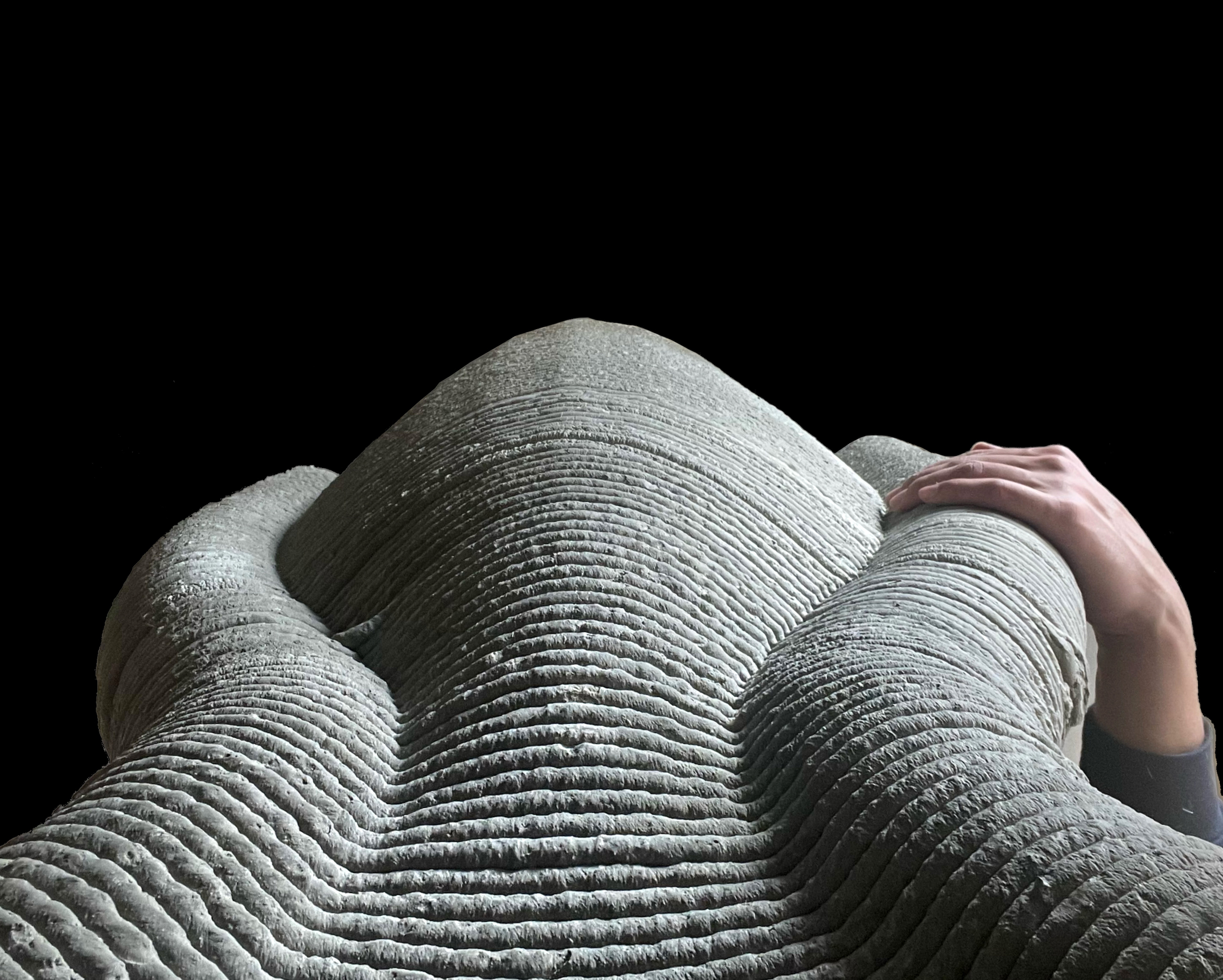
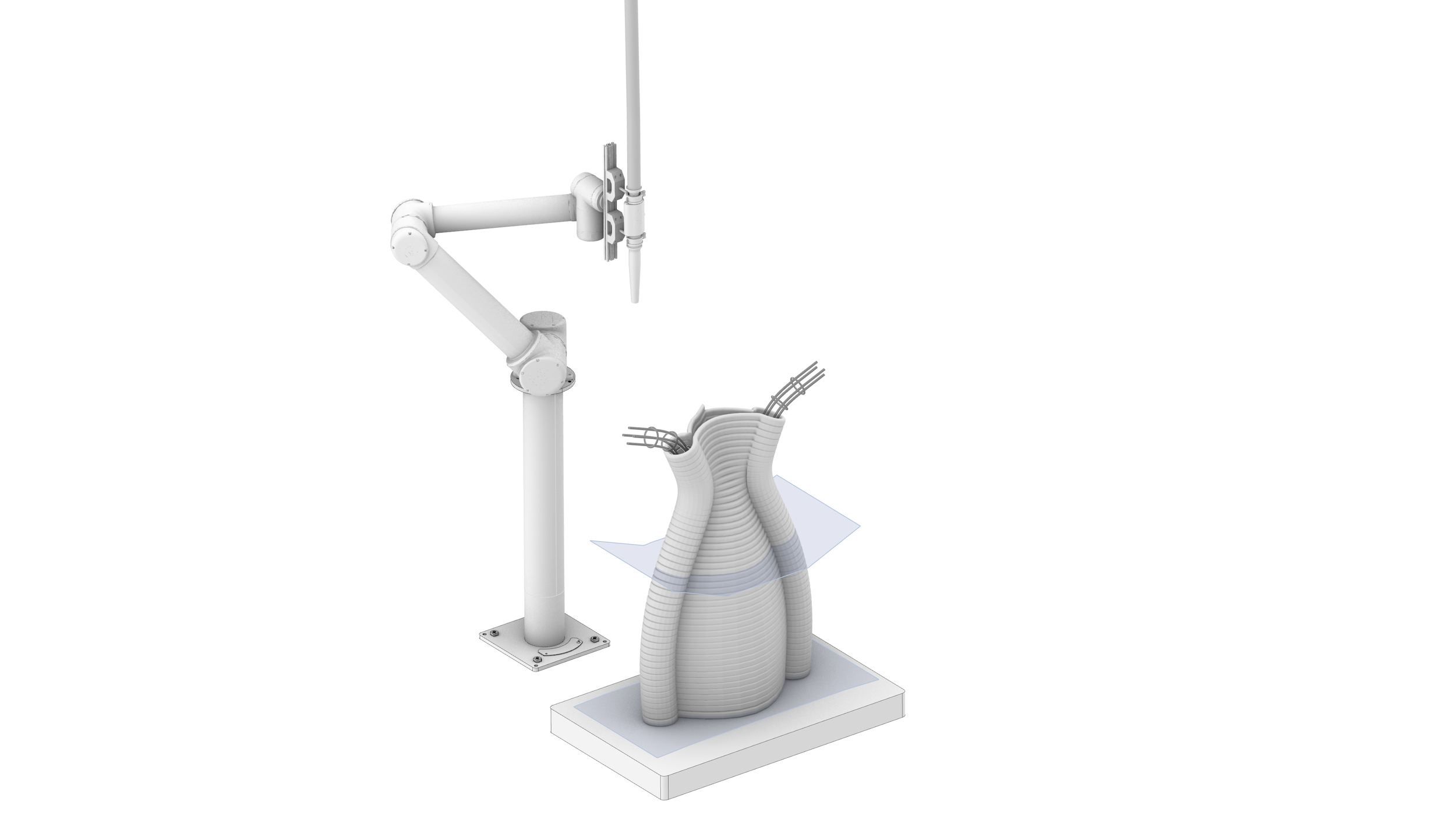
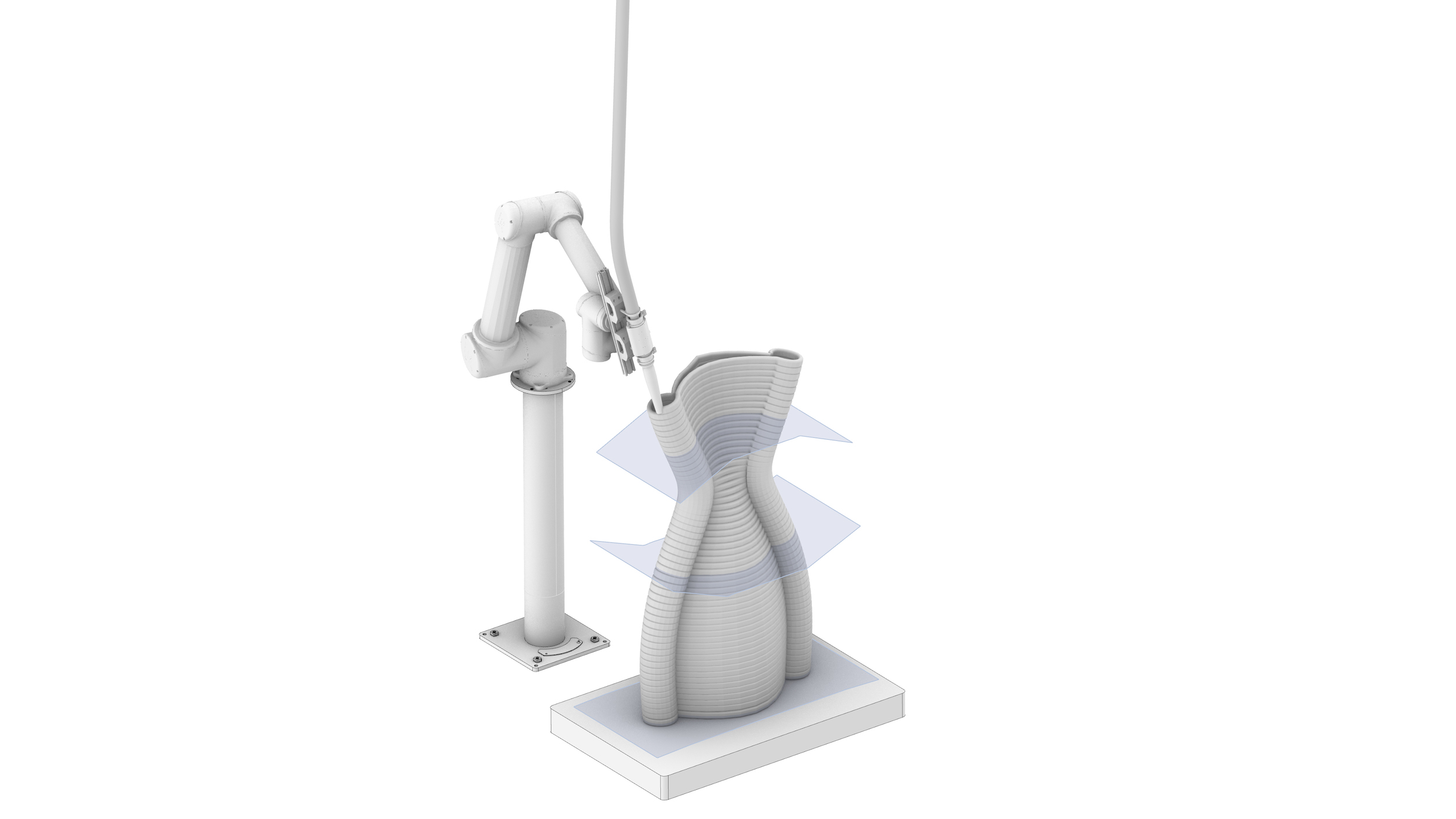
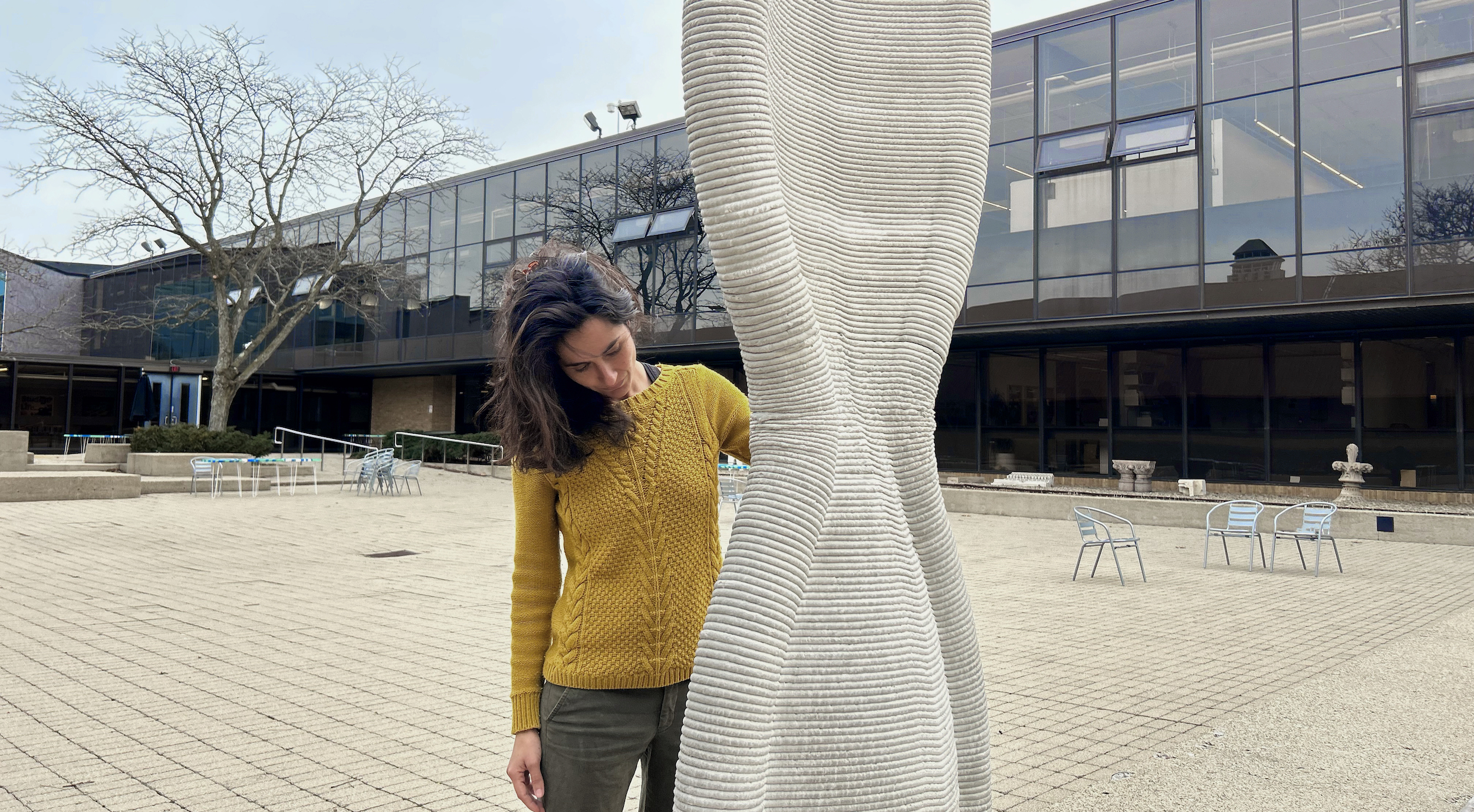
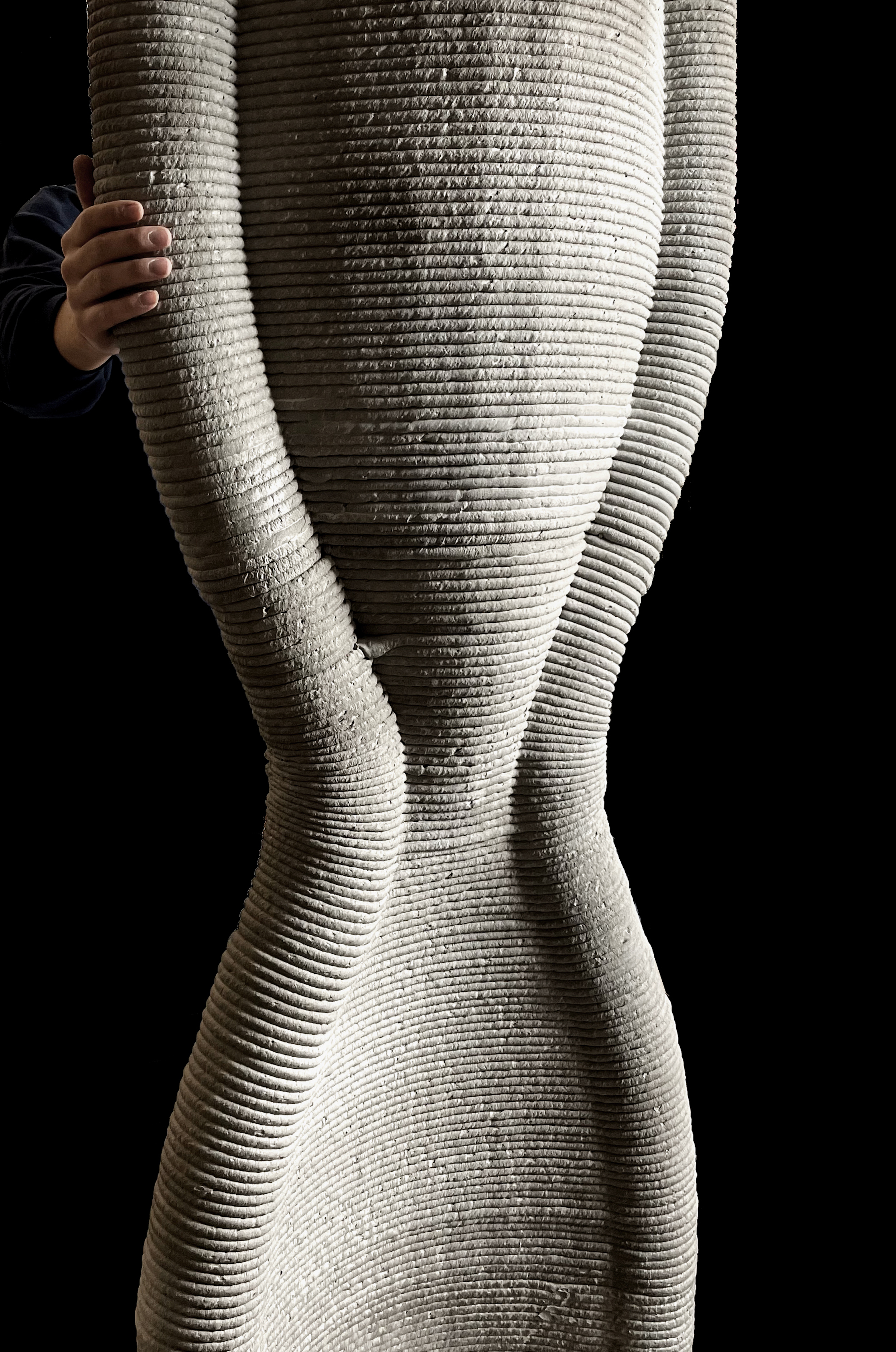
Related Stories
3D Printing | Nov 27, 2020
The Fibonacci House: A test case of 3D construction printing
The Fibonacci House, which we have named after Leonardo Fibonacci, the medieval Italian mathematician, illustrates the potential of 3DCP and demonstrates how a complex design and challenging logistics can be solved through pragmatic planning and 3DCP technology.
Coronavirus | Apr 15, 2020
3D printing finds its groove fabricating face shields during COVID-19 crisis
The architecture firm Krueck + Sexton is producing 100 shields for a Chicago-area hospital.
Coronavirus | Apr 4, 2020
COVID-19: Architecture firms churn out protective face shields using their 3D printers
Architecture firms from coast to coast have suddenly turned into manufacturing centers for the production of protective face shields and face masks for use by healthcare workers fighting the COVID-10 pandemic.
AEC Tech | Feb 13, 2020
Exclusive research: Download the final report for BD+C's Giants 300 Technology and Innovation Study
This survey of 130 of the nation's largest architecture, engineering, and construction firms tracks the state of AEC technology adoption and innovation initiatives at the AEC Giants.
3D Printing | Dec 10, 2019
6,888-sf Dubai Municipality building is the largest 3D printed building to date
Apis Cor 3D printed the building.
3D Printing | Sep 17, 2019
Additive manufacturing goes mainstream in the industrial sector
More manufacturers now include this production process in their factories.
3D Printing | Jun 10, 2019
Thornton Tomasetti invests in 3D printing firm
XtreeE focuses on large-scale 3D-printing for the AEC industry.
3D Printing | Mar 14, 2019
Saudi Arabia just purchased the largest 3D construction printer in the world
COBOD developed the printer, dubbed the BOD2.
3D Printing | Dec 7, 2018
Additive manufacturing heads to the jobsite
Prototype mobile 3D printing shop aims to identify additive manufacturing applications for construction jobsites.
3D Printing | Aug 31, 2018
Marines built the world’s first continuous 3D-printed concrete barracks in 40 hours
Normally, it takes 10 Marines five days to build a traditional barracks out of wood.




